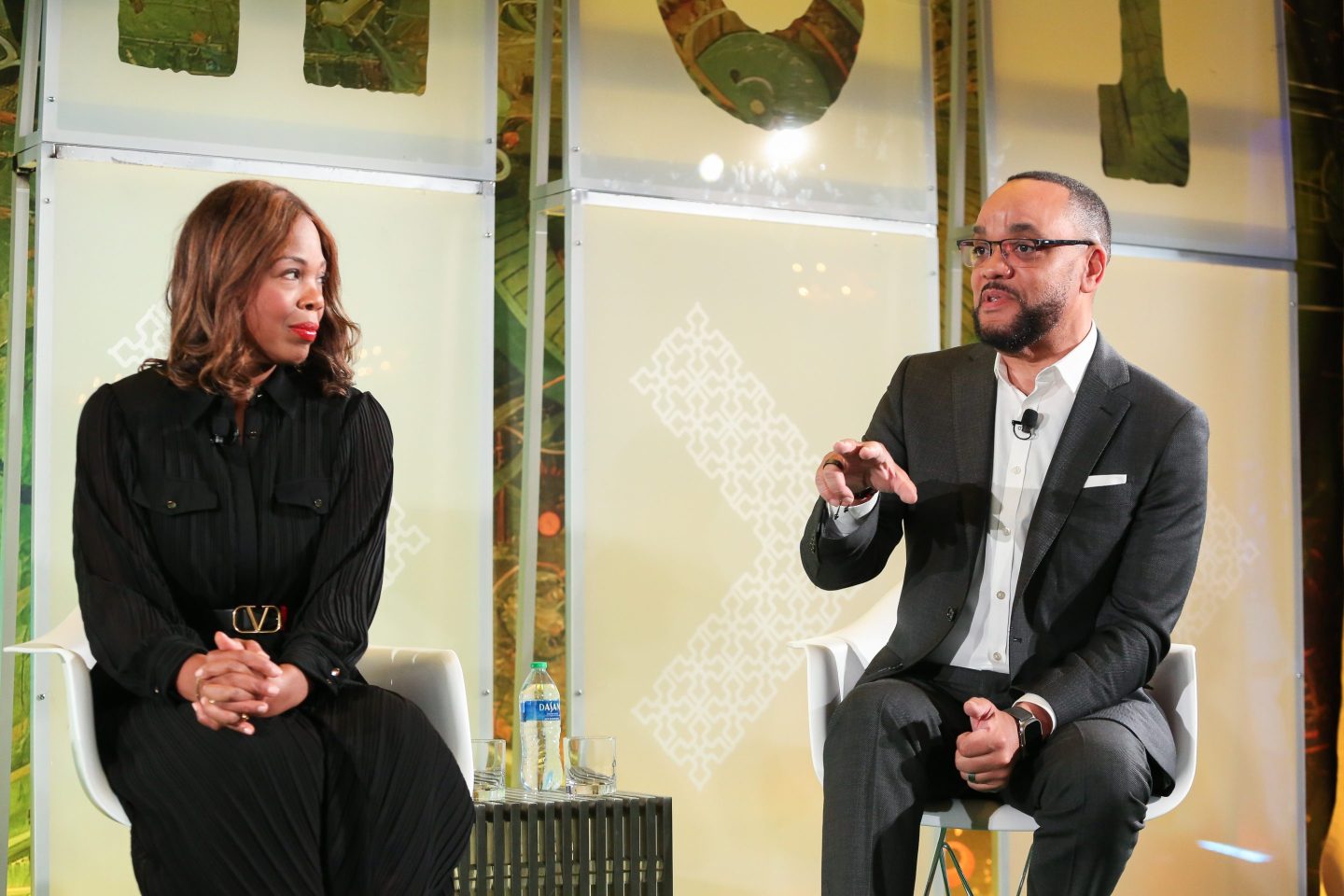Good morning!
Companies that hastened to create a DEI program during the 2020 racial justice protests may be most susceptible to backtracking on those commitments today.
“In the wake of the racial reckoning of 2020, a lot of companies were very reactive…We had an ‘oh, crap’ moment in corporate America,” Brian Tippens, Cisco’s senior vice president and chief social impact officer, said on day one of the Fortune Impact Initiative in Atlanta. Three years later, these companies are “ditching” their diversity commitments after failing to embed DEI into their business. According to a February report from Revelio Labs, more than 300 DEI roles were impacted by layoffs at major organizations in the last half of 2022—the highest of any function.
“If a company can do away with the D&I officers because it didn’t add business value, well, that’s a problem, right?” said Tippens. “The situation wasn’t set up in such a way that the D&I leader was adding business value through metrics [such as] satisfying our customers or satisfying our team members.”
Tippens advised leaders to focus on the “three Cs of diversity:” compliance, corporate social responsibility, and competitive advantage. “We have to show that diversity, equity, and inclusion add to business value, whether it’s around eliminating regrettable attrition, making sure that our employees’ needs are met, or making sure we can satisfy our customers in the marketplace,” he says, “We have to try and tie dollar value to the work that we do in terms of metrics.”
In 2020, Cisco established a social justice action office focused on 12 measures, such as increasing the representation of Black employees, improving pay equity practices, and providing antidiscrimination and inclusive culture training to employees, partners, and select suppliers. Metrics from this program are reported to Cisco’s board of directors quarterly.
At Walgreens Boots Alliance, the pharmacy store chain tries to ensure that its workforce reflects the communities it serves across the U.S. and relies on metrics it shares in external reports. “In our ESG report, we use very stringent standards about being able to quantify our progress and in our measures,” said fellow panelist Alethia Jackson, Walgreens Boots Alliance’s senior vice president of ESG and chief DEI officer.
Lastly, organizations and leaders need the guts to stand by their DEI commitments—no matter how unpopular they may become.
“Sometimes we have to make these decisions that this is what we stand by, this is our purpose. We’re not going to waver from this,” said Tippens. “And if you don’t agree with this, maybe this is not the company for you.”
Watch the Fortune Impact Initiative livestream here.
Paige McGlauflin
paige.mcglauflin@fortune.com
@paidion
Reporter's Notebook
The most compelling data, quotes, and insights from the field.
While the share of individuals working full-time in the U.S. grew in 2022, median income decreased in that same period, according to U.S. Census Bureau data released on Tuesday.
The number of full-time, year-round U.S. workers increased by 3.4% between 2021 and 2022, and 65.6% of working women worked full-time, year-round—the largest share on record, according to the Bureau.
However, median earnings for all workers decreased by 2.2% from 2021 to 2022, and real median household income decreased by 2.3% to $74,580 in 2022.
Around the Table
A round-up of the most important HR headlines.
- In a leaked email, Google’s top lawyer asked employees not to discuss the company’s historic antitrust trial with the Justice Department internally or externally. Insider
- A new A.I. model that monitors mouse and keyboard activity is better at predicting office workers’ stress levels than a heart rate monitor, according to a new study. Wall Street Journal
- The surging cost of childcare is forcing New York parents to leave their jobs and businesses to perform caregiving. Childcare workers, who often make just slightly over minimum wage, are simultaneously leaving the industry. New York Times
- Lyft is rolling out a feature that would let drivers and passengers who identify as women or non-binary toggle a setting that requests rides with those of the same gender. The rideshare company hopes to incentivize more female drivers and passengers to join the platform. Bloomberg
Watercooler
Everything you need to know from Fortune.
Hustling for housing. As soaring mortgage rates push homeownership further from view, more millennial and Gen Z workers are taking on side hustles to save for a down payment. —Sydney Lake
A remote reflection. Though many workers are still pining for the days of fully remote work, the three days in-person compromise is a watershed moment for employee freedom.—Alicia Adamczyk
Being in the know. The new era of corporate jargon is here. From “menty B” to “slay” to “cozzie livs,” these are the Gen Z slang words you’ll likely hear around the office. —Orianna Rosa Royle
This is the web version of CHRO Daily, a newsletter focusing on helping HR executives navigate the needs of the workplace. Sign up to get it delivered free to your inbox.













